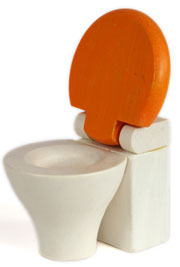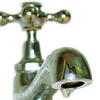There is a lot that can be done to improve urinary incontinence. Dr Joe Kosterich talks about diagnosing the problem, treatments for urinary incontinence, including surgical and non-surgical methods, and managing urinary incontinence.
 Hi, I’m Doctor Joe. In this video we’re going to be talking about management of urinary incontinence. In a previous video we spoke about the two types of incontinence, which were stress and urge incontinence, and we spoke about the fact that it was very common even though it’s a little bit hidden because of various reasons – it’s not a topic of dinner party conversation.
Hi, I’m Doctor Joe. In this video we’re going to be talking about management of urinary incontinence. In a previous video we spoke about the two types of incontinence, which were stress and urge incontinence, and we spoke about the fact that it was very common even though it’s a little bit hidden because of various reasons – it’s not a topic of dinner party conversation.
The really important thing to be aware of with any form of urinary incontinence is that there is a lot that can be done to improve it. Fifty years ago there wasn’t, and the tales that your grandmother will say about, “Well, you’ll just have to put up with it, dear,” in those days was maybe correct but these days certainly isn’t. The forms of treatment divide broadly into surgical and non-surgical. It’s that second group which will cover the vast majority of people.
Step one, of course, is going to your GP and putting your hand up and saying, “Look, I do have this problem. If I run too fast I find I leak a few drops of urine, if I play tennis I find I’m leaking a few drops of urine, if I’m running up the stairs too quickly the same thing.” Or the other type again: “If I feel the need to go, I really need to dash very quickly and it concerns me.”
Now step one is often to asses that, and an ultrasound scan could be the way to go. Either through an ultrasound lab, or these days often at physiotherapists who specialise in this area, they can do a real-time ultrasound and actually have a look at the muscles whilst you’re lying there and looking to contract them. So we can see which muscles are working and which aren’t. The importance of that is that the key to improving bladder function is improving the pelvic muscles. So particularly for women out there when you’re told after childbirth to do your pelvic floor exercises, you really will get the benefit of that years down the track. It isn’t something to put off or forget about, it is something to do on a daily basis almost with some degree of religious conviction about it.
Strengthening up the muscles can be done, but of course it’s about strengthening up the right muscles, and that’s were guidance from real-time ultrasound can be very important. So assessing where you’re at first and then looking at a programme of exercises can be useful. The other thing that physios that specialise in this area can do these days is use other devices, particularly machines that can help stimulate the muscles and assist with that pelvic floor process. There are also continent services run out of some private centres and also out of hospitals, and you can get in contact with them as well.
Medications have a fairly limited role in urinary incontinence. They are sometimes used overnight because there are some tablets that can almost put “handbrake” on the bladder. However, if you put the handbrake on too tightly it will create more problems than is solved because you will end up retaining the urine and your bladder will start to stretch. That is a real problem, so medications don’t have a big role to play.
The other form of treatment is surgical, and there are some operations that can be done to strengthen up the pelvic floor and the bladder mechanism. That will generally not be done unless simple non-surgical methods haven’t worked. However, there are some people where it will be required and often they will be referred through to a specialist gynaecologist or urologist for consideration for that type of surgery.
Other things to do for managing incontinence, particularly in the elderly where exercises or even surgery may not be contemplated, are really more practical measures. There are a number of incontinence devices and appliances that are applied, including catheter-type bags, various sorts of pads and incontinence-type sheets. Those sorts of treatments don’t treat or “cure the problem” but they do get around it, so that the person can continue to live with a degree of dignity.
The key thing with urinary incontinence is that it can be managed. If you’re sitting at home and you don’t tell your doctor or anyone about it, obviously there’s not a lot that can be done. If you do raise the topic with your doctor then there are a number of options available. Most of them are fairly simple and, above all else, most of them are actually very effective. So compared to your grandmother who perhaps did to a degree “have to live with it”, today you don’t have to live with it.
 |
To watch the previous video about urinary incontinence, see Urinary Incontinence: About Incontinence. |
All content and media on the HealthEngine Blog is created and published online for informational purposes only. It is not intended to be a substitute for professional medical advice and should not be relied on as health or personal advice. Always seek the guidance of your doctor or other qualified health professional with any questions you may have regarding your health or a medical condition. Never disregard the advice of a medical professional, or delay in seeking it because of something you have read on this Website. If you think you may have a medical emergency, call your doctor, go to the nearest hospital emergency department, or call the emergency services immediately.







